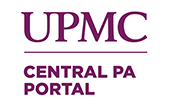Find Relief From Sleep Apnea
Inspire Upper Airway Stimulation is a promising new FDA-approved treatment for people with moderate to severe Obstructive Sleep Apnea (OSA) who are not receiving consistent benefits from continuous positive airway pressure (CPAP).
This fully implanted system delivers mild stimulation to keep a patient’s airway open during sleep, and does not require a mask. And results from the STAR clinical trial, recently published in the New England Journal of Medicine, showed that Inspire Upper Airway Stimulation therapy can significantly reduce sleep apnea events and significantly improve patient quality of life measures.
In addition, UPMC was the first hospital in the nation to perform the Inspire procedure following FDA approval and offers the region's most excperienced and only board-certified sleep medicine and sleep surgery physician, Ryan Soose, MD.
How Does Inspire Work?
Inspire therapy is a fully implanted system, controlled with a small handheld Inspire sleep remote.
The implanted system consists of three fully implanted components:
- A small generator
- A breathing sensor lead
- A stimulation lead
When activated, Inspire therapy senses breathing patterns and delivers mild stimulation to key airway muscles, which keeps the airway open during sleep.
A patient simply turns the therapy on before bed and off upon waking using the handheld Inspire sleep remote.
Proven Results Include:

Am I a Candiadate for This Procedure?
To determine if the treatment is right for you, you must first:
- Schedule an initial clinic visit at the Division of Sleep Surgery for a general physical examination.
- Have a sleep study that confirms Apnea Hypopnea Index (AHI) severity. This It is generally expressed as the number of sleep apnea events per hour.
- Have a surgical consultation at the Division of Sleep Surgery.
- Undergo a drug-induced sleep endoscopy, a powerful tool to evaluate the throat and observe the potential blockage of breathing in the palate and tongue regions.
To be considered a serious candidate for the treatment, you must:
- Have moderate-to-severe sleep apnea.
- Have either failed or not tolerated CPAP treatment.
- Be free of complete concentric collapse at the palate.
- Not have certain diseases or conditions that disqualify you as a candidate.
- Have a body-mass index, or BMI, of 32 or less.
What Can I Expect During This Procedure?
The implant device can potently be done as an outpatient procedure under general anesthesia. The Inspire system is placed under the skin of the neck and chest through three small incisions.
Some pain and swelling is expected at the incision sites for a few days after the implant. Patients should be able to return to normal, non-strenuous activities within two weeks, or as directed by your doctor.
A week after surgery, your doctor will examine you to make sure you are healing properly. Most patients have a full recovery within two weeks.
When Will the Implant Be Activated?
Activation of the implant will take place three to four weeks following your initial surgery. During an appointment your doctor will turn the system on for the first time. During this time, your doctor will establish your personal therapy settings and show you how to use the device.
Your doctor will then have a check-in by phone at week five to make sure there are no complications. At three months, you will return to the sleep lab for an overnight sleep study, where settings may be adjusted for optimized therapy.
Additional visits with your doctor may be needed to adjust settings. Following final adjustments, it’s common to see your doctor one or two times per year for general check-ups, including a physical exam and routine device checks.



















